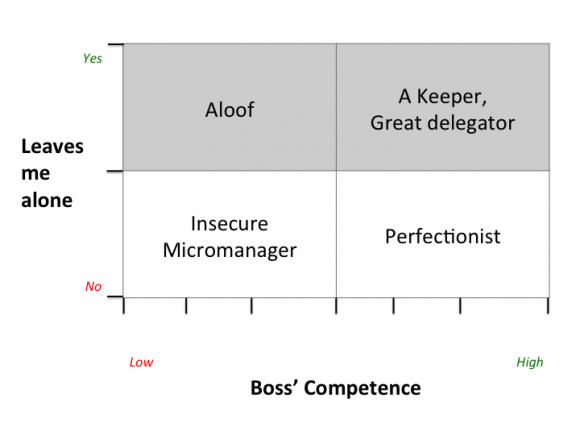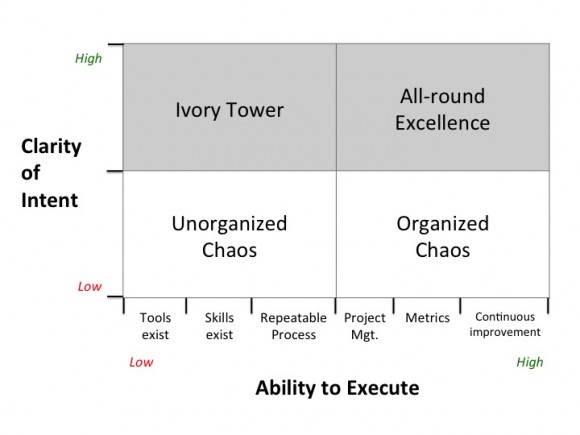 Send to Kindle
Send to KindleWe all have a boss. Love them or hate them, you cannot ignore them. You will get your share of good, bad, mediocre, and unforgettable bosses. If you get a bad boss, unfortunately, you have to adjust our behavior, don’t expect your boss to do the same. An ability to be flexible is probably one of the metrics for spotting a good boss. A framework for your consideration is shown below.
This commentary is a little one sided because it focuses only on the boss’ competence. Nevertheless, it is a guide for your behavior, more than your boss.
First and foremost, the boss has to be competent. “Competence” includes both job related knowledge/skills as well as ability to relate to people, and make them feel good about themselves. If the boss does not know what he or she is talking about, ability to delegate is irrelevant. Once the boss becomes competent, he or she has to work on “letting go.” This means having a tolerance for ambiguity, imperfection, and mistakes made in the learning curve. If your boss is not competent, pray he or she is aloof. At least that will lower the stress on the job. However, don’t expect your career to grow unless you are an exceptional performer anyway.
Having an incompetent boss is no excuse for not managing your own career. While your career may look like it has hit a speed bump, you can work hard to increase your competence. Bosses are impermanent (yes, there may be exceptions to this rule), so in addition to managing the current one, you have to prepare for the next one.

